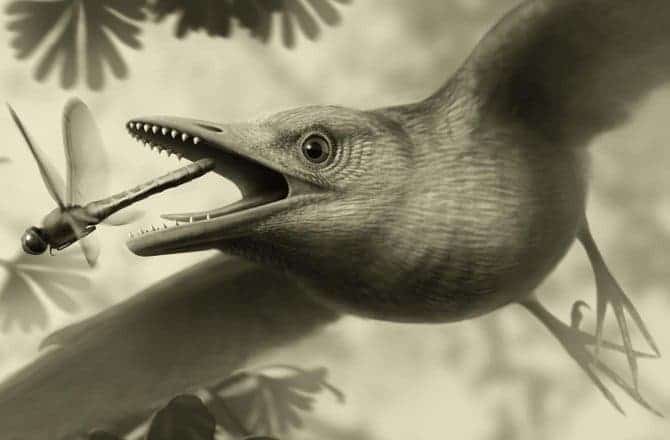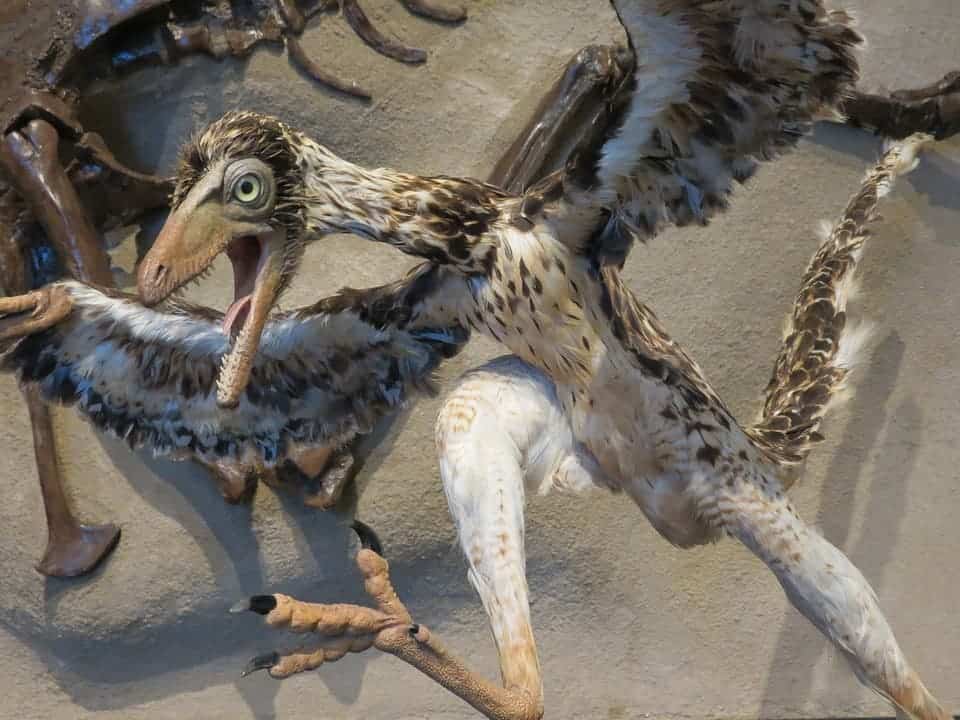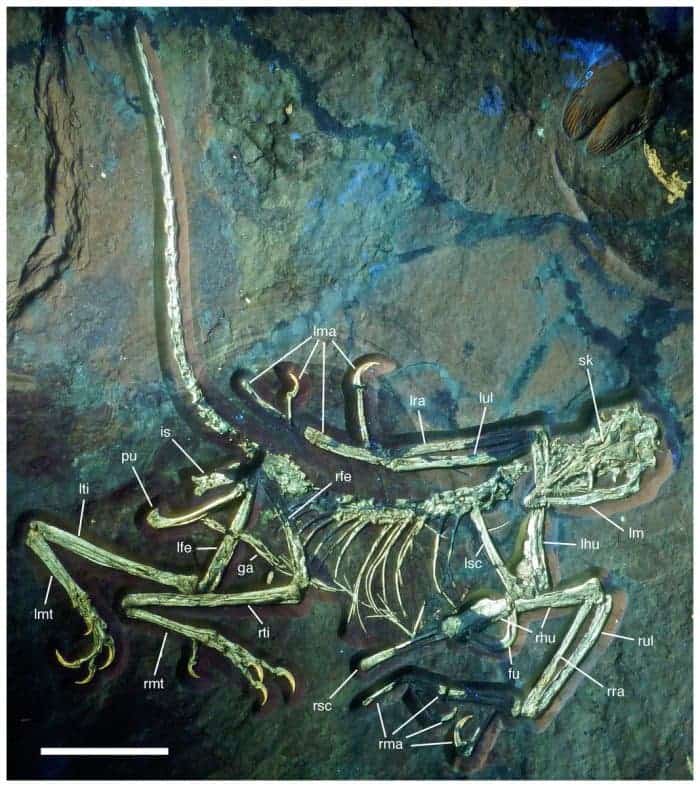The remarkably well preserved fossil of a wing that belonged to an early Cretaceous bird suggests some of the first avian creatures could fly. The remains were unearthed from a limestone site in Spain, and exhibit features reminiscent of modern birds like intricate arrangement of muscles, tendons and ligaments. This soft tissue system is excellent for controlling position and allows rapid adjustment of the wing to navigate through the air.

Among reptiles, powered flight is known to have evolved at least twice: pterodactyls and birds. It’s common knowledge now that birds evolved from theropod dinosaurs, which were also covered in feathers. The most famous example is the bird-dinosaur Archaeopteryx from the Upper Jurassic of Germany who lived 150 million years ago. With the claws and teeth of a dinosaur, but the feathers of a bird, it was clearly a transitional form. Some even believe it was capable of flight, as evidenced by robust shafts on the wings, feathered hind legs and a feather arrangement that should have supported flight. Whether or not it could fly or just glide is a matter of debate.
The new, yet to be named, bird species discovered in central Spain is further evidence that early birds could fly, as supported by the soft tissue fossils (a strikingly rare find!). Guillermo Navalón, lead researcher, says it’s surprising that these modern feats were found in early birds. At the very least, this means ancient birds were capable of aerodynamic feats in a fashion similar to living birds.
“The anatomical match between the muscle network preserved in the fossil and those that characterize the wings of living birds strongly indicates that some of the earliest birds were capable of aerodynamic prowess like many present-day birds,” said Luis Chiappe, one of the authors of the study, who is with the National History Museum of Los Angeles County, in a press release.
The bird was part of the group of “true birds” known as Enantiornithes, the other being Ornithurines.
But even given the “unique glimpse into the anatomy of the wings of the earliest birds”, scientists can’t tell for sure if the 125-million-year old bird could fly. They might have been exceptional flyers, soaring high above giant dinosaurs, or merely capable of short flights from the ground and glides.
The new fossil provides us with a unique glimpse into the anatomy of the wing of the birds that lived amongst some of the largest dinosaurs,” Chiappe said. “Fossils such as this are allowing scientists to dissect the most intricate aspects of the early evolution of the flight of birds.”






